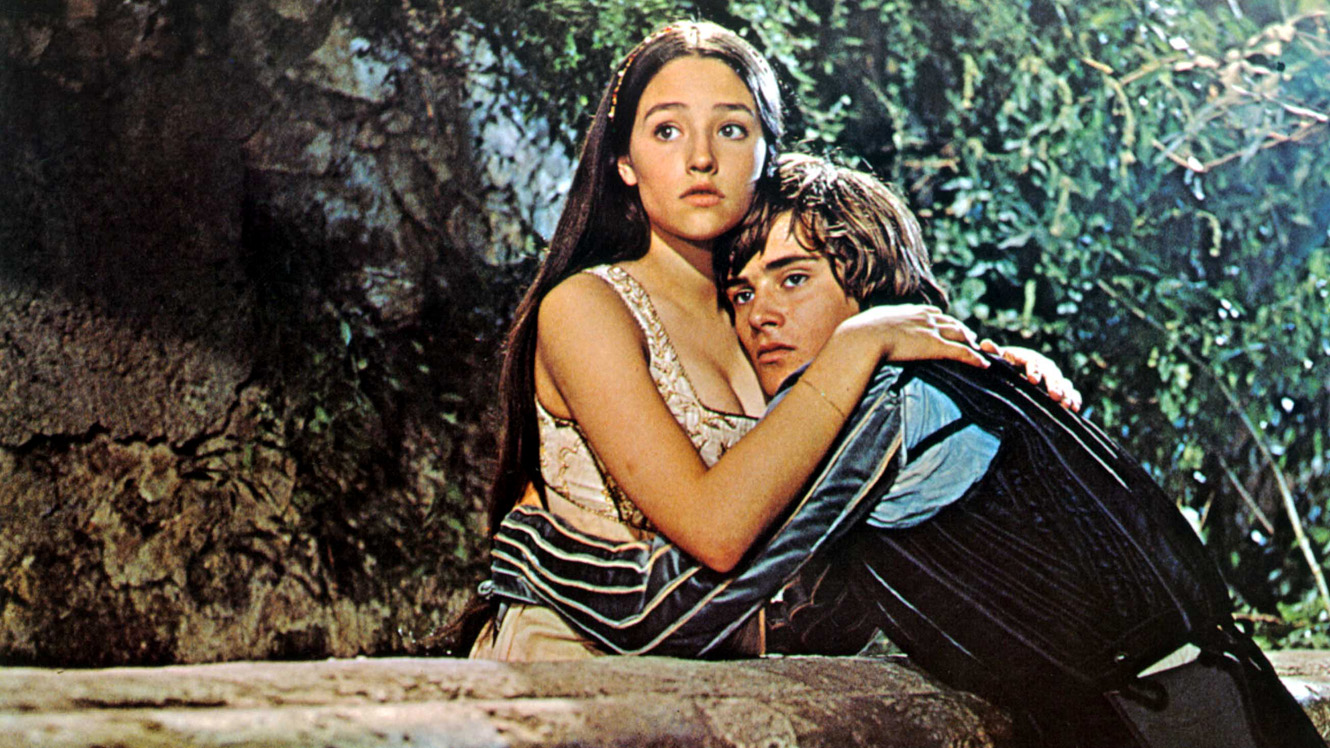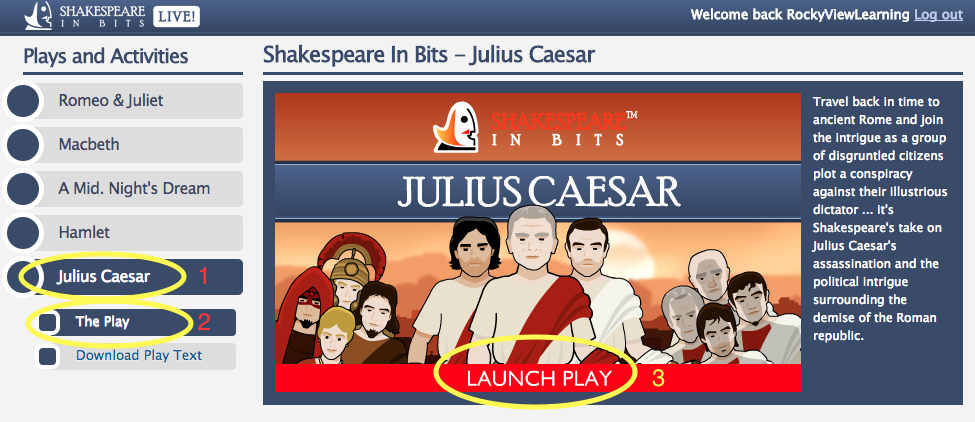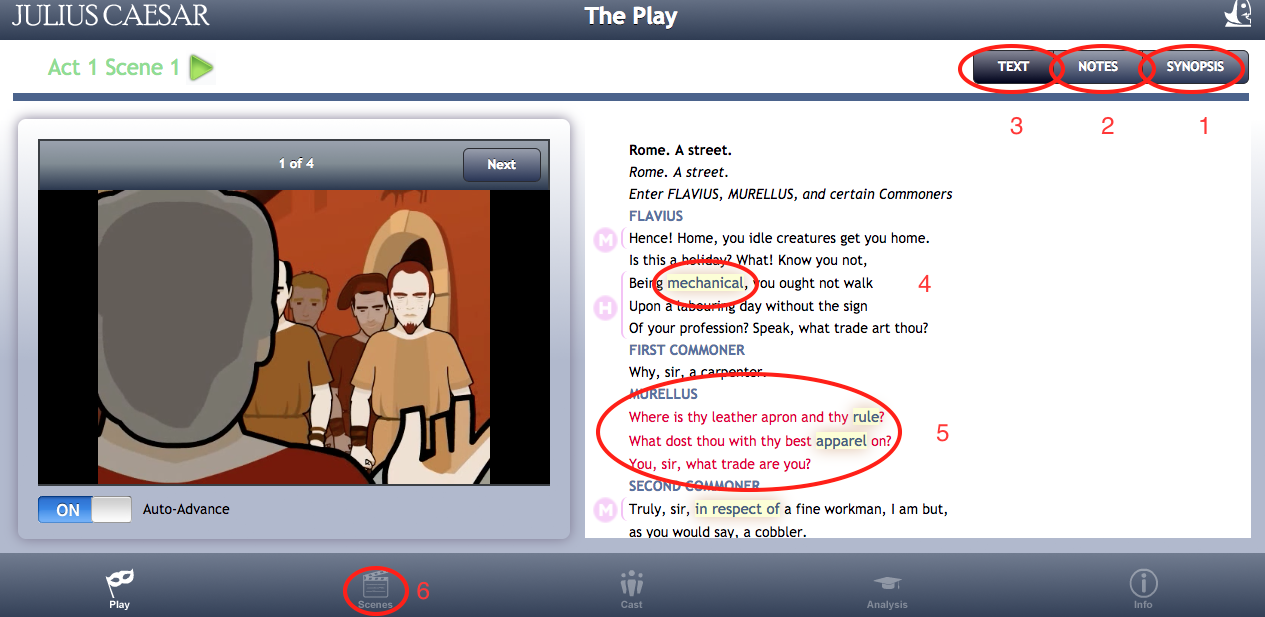Lesson Five - Romeo and Juliet
| Site: | MoodleHUB.ca 🍁 |
| Course: | English Lang Arts 10-1 |
| Book: | Lesson Five - Romeo and Juliet |
| Printed by: | Guest user |
| Date: | Tuesday, 23 December 2025, 6:34 AM |
Introduction
 Lesson Five - Romeo and Juliet
Lesson Five - Romeo and Juliet
Duration - 12 blocks (12 x 80 min + homework)
"A glooming peace this morning with it brings.
The sun for sorrow will not show its head.
Go hence, to have more talk of these sad things.
Some shall be pardoned, and some punished,
For never was a story of more woe
Than this of Juliet and her Romeo."
- Prince Escalus, Romeo and Juliet
"Welcome to the world of William Shakespeare. If this is your first exposure to Shakespeare, then you are about to embark on an exciting adventure!
"Shakespeare's works, whether they be tragedy or comedy, fantasy or history, deal with characters who are larger than life and yet very real. So real in fact, that one cannot help but identify with their fortunes and failures, characteristics and conflicts.
"There is fire and life in Shakespeare which still burns brightly even after four hundred years.
"In 1623, Ben Jonson heralded Shakespeare as being 'not of an age but for all time' Several hundred years later, Russian novelist Leo Tolstoy (1828-1910) declared that 'Shakespeare is crude, immoral, vulgar, and senseless.' Who was right? Perhaps, like most things in life, it depends on your point of view and attitude. Shakespeare himself wrote that "Nothing is either good or bad but thinking makes it so." - Introducing Shakespeare, The Global Shakespeare Series
In this lengthy, multi-part lesson you will
- read about the history of drama
- review the elements of drama, dramatic conventions, and types of drama
- be introduced to the source, setting, characters and plot of Romeo and Juliet
- explore various websites that will aid your understanding and appreciation of Romeo and Juliet
- read Romeo and Juliet and respond to the play!
Lesson - Part 1
"Shakespeare is a drunken savage with some imagination whose plays can please only in London and Canada." -Voltaire (1694-1778)
Voltaire didn't appear to have much of an opinion of The Bard!
Read through the NOTES posted on the Resources Page for Part One of this lesson to acquaint yourself with Shakespeare, his London, and Romeo and Juliet.
Assignment 1
(30 marks)
Write the Shake and R&J NOTES Quiz.
This is an Open Book lesson quiz. You do NOT need a password to log into it and it is NOT time restricted.
Submit only when you have answered all questions.
Resources - Part 2
Websites
Elizabethan and "modern" Romeo and Juliet
Notes
ONE, TWO, THREE, FOUR, FIVE
VIDEO
The website linked below provides access to the complete play, as a movie in graphic novel format. As the video plays, you can follow along with the spoken word via the highlighted text. Specific details on how to access are detailed on the following page.
Romeo and Juliet in Bits: http://siblive.
username: RockyViewLearning
password: 1obySG3Ens3p
R & J Video and Text
Copy the password so you can paste it when you open the website.
Study the username.
Click on the link and enter the Username and Password.
Then click ENTER.
Romeo and Juliet in Bits: http://siblive.
username: RockyViewLearning
password: 1obySG3Ens3p
You will then see the kind of page listed below.
You will see all the plays available to you.
Click on "Romeo and Juliet", then "The Play", and then "Launch Play".

Once the play launches, you will then see this kind of screen:

The "movie" version of the play will instantly play. Use the usual "stop", "start", "pause" buttons as you watch.
For each scene, access it in this order:
- Click on "Synopsis" and read "What happens in this scene" so you know what happens!
- Click on "Notes" for further information you should be aware of.
- THEN click on "Text" to watch/read the scene.
- As the scene moves along, click on the words highlighted to get the modern version of them.
- As the various characters talk, their words are shown in red.
- Clicking on "Scenes" at the bottom of the screen gives you a quick way to access to whatever scene you want to watch/read.
Lesson - Part 2
"Everyone is familiar with the typical love story in which two young people fall in love and become oblivious to the rest of the world. The young couple is so drawn together that they are willing to go to any lengths for each other, at any cost, regardless of obstacles. There are always obstacles, of course. There may be parental disapproval, problems resulting from strained relationships and previous loyalties, and any number of jealousies and hatreds. These obstacles constantly threaten to ruin the relationship before it really has a chance to grow. To the young lovers, these obstacles are merely annoyances encountered on their way to happiness. They are determined that all of their problems can and will be overcome simply because their love is more important than life itself."
Most people think that it's necessary for us to control our emotions if society is to be reasonable and safe. However, there are times when people act emotionally. What are some of the feelings that cause people to:
- fight with each other?
- defend a friend no matter what?
- fall in love with each other?
- fear or resist authority?
- harms themselves or others?
- decide it is better to avoid a confrontation than encourage one?
- decide not to "take the law into their own hands", even though they believe that have been wronged?
Can a person really decide that he or she is going to fall in love with another person? Really think about this question.
The ideas of love, hate, friendship, emotion, and reason, will all translate into important themes in Romeo and Juliet. Keep them in mind as you read or watch the play.
Read or watch Romeo and Juliet (use "Shakespeare in Bits" linked on the Resources 2 page).
Assignment 2
Assignment (25 marks)
Open a new Word or PowerPoint document. Label it E101U3L52surname
In this document, complete the assignment as outlined below.
Submit this assignment using the Dropbox Folder for U3L5 Romeo and Juliet summary
SUMMARIZE the PLAY
- You are going to summarize Romeo and Juliet using actual lines from the play.
- Your summary will be 30 lines long - only! (You will be penalized if your summary is more than 30 lines long!!)
- You are allowed to use only one line per scene in your summary, so choose wisely. What one line from each scene best summarizes the events of that particular scene?
- There are 24 scenes in Romeo and Juliet. (1:5, 2:6, 3:5, 4:5, 5:3)
- You are allowed to choose one extra line from anywhere in the play you deem necessary in order to round your summary out to 25 lines.
- Present your 25 line summary as poem, in the manner in which Shakespeare wrote. This means you will end up with five stanzas, one for each act.
- Include Act, scene and line numbers at the end of each line you quote.
Sample Summary of Act One, Macbeth.
"Fair is foul, and foul is fair (I.i.1.)
For brave Macbeth – well he deserves that name (I.ii.18)
All hail Macbeth! that shalt be king hereafter (I.iii.52)
More is thy due than more than all can pay (I.iv.24)
Thy nature is too full o’th’ milk of human kindness (I.v.16)
We are your guest tonight. (I.vi.30)
False face must hid what the false heart doth know. (I.vii.92)
Lesson - Part 3
Did you know that Shakespeare varied the complexity of the words and the imagery employed by his characters in order to indicate role, class, intelligence, education and status?
How many different themes/ideas can you suggest for Romeo and Juliet?
What role does choice play in this tragedy?
Read through the documents on the Resources 3 page.
Explore Ms Nakaska's Delicious bookmarks on Romeo and Juliet, taking into account a variety of different interpretations of various aspects of the play.
Consider how the choices an individual makes may reflect that person’s character and often determine the events or direction of that person’s life. In literature, as in life, the individual chooses either to accept circumstances as they are or to take action in shaping events according to his or her beliefs or desires.
Assignment 3
(100 marks)
Open the Word document "essay skeleton - chart". Save it as E101U3L53surname
In this document, complete the assignment outlined below.
Submit this assignment using the Dropbox for U3L5 Romeo and Juliet skeleton
Rather than writing a formal literary essay, you are going to create an essay skeleton by filling in the spaces in the chart. Notice that the body paragraphs follow this format: (NEXT)
- New idea - provide a topic sentence for the paragraph that is related to your thesis statement
- Evidence - provide evidence in the form of a strong quotation or paraphrase from the story to support your statement
- eXplanation - explain how the detail you have chosen proves your thesis to be true
- Evidence - provide evidence in the form of a strong quotation or paraphrase from the story to support your statement
- eXplanation - explain how the detail you have chosen proves your thesis to be true
- Evidence - provide evidence in the form of a strong quotation or paraphrase from the story to support your statement
- eXplanation - explain how the detail you have chosen proves your thesis to be true
- Transition - provide a transition from this paragraph to the next
Each body paragraph, then, will follow the "principle of thirds" - you create a statement, and then provide three pieces of evidence to support it, evidence for which you provide explanations.
The choices an individual makes may reflect that person’s character and often determine the events or direction of that person’s life. In literature, as in life, the individual chooses either to accept circumstances as they are or to take action in shaping events according to his or her beliefs or desires.
Complete the essay skeleton based on Romeo and Juliet in which William Shakespeare examines the characters' choices, answering the question, what idea(s) does Shakespeare develop regarding the significance of an individual's choices?
Begin by first filling in the red cells of the chart, followed by the evidence, and then the explanations.
The first red cell is the thesis statement - that will be the answer to the question regarding choices.
The next three cells must be general, as well, and provide support for the thesis statement.
Conclusion
"Rancour has been converted to love. That which is base has been transmuted into gold. Juliet and her Romeo, who at the outset of the play claims to have 'a soul of lead' (I. iv. 15) are now converted to statues of pure gold." - Lyndy Abraham, professor, University of New South Wales